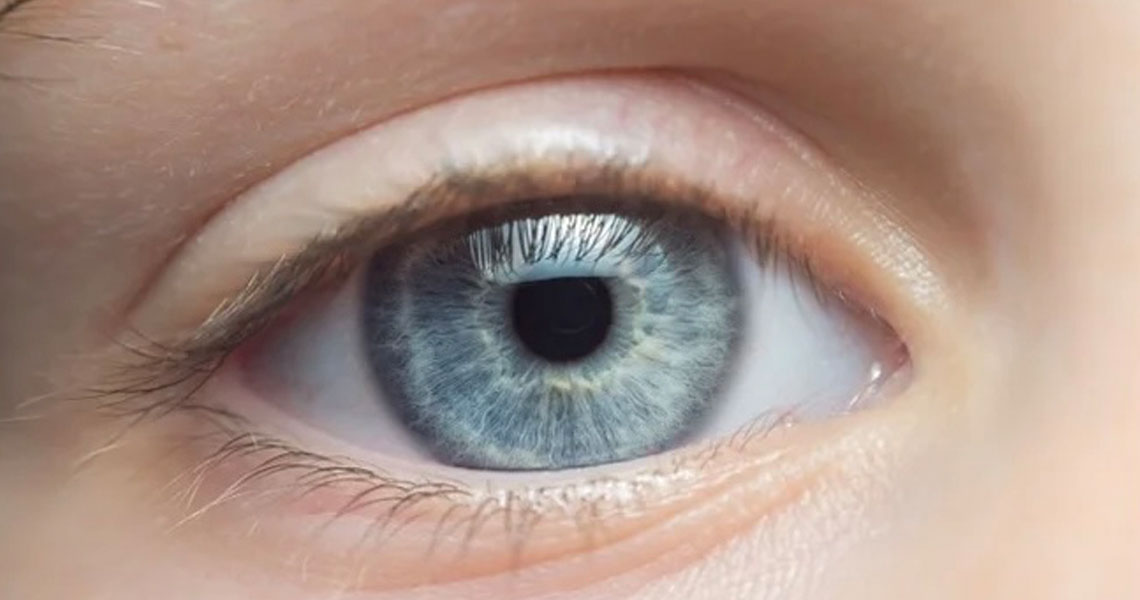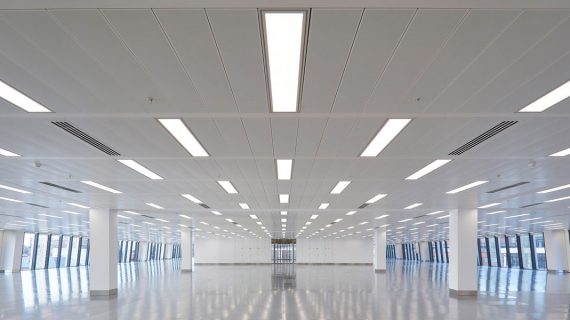Let's save our eyes by choosing the right lighting
Rudenī un ziemā, kad dienasgaismas kļūst mazāk, arvien ilgāka dienas daļa tiek pavadīta telpās, lasot, skatoties televīziju, kavējoties pie datora un internetā. Acis nogurst, tādēļ tās ir jāsaudzē. Kā pareizi izvēlēties apgaismojumu un kam jāpievērš vislielākā uzmanība, stāsta acu ārste Ilze Strautmane un apgaismojuma speciālists Andis Čeksters.
Kā redz acs
Mēdz teikt, ka acis ir galvas smadzeņu redzamā daļa. Citi saka, ka acis ir dvēseles spogulis. Acis un smadzenes ir vienota sistēma. Acis uztver informāciju un pārvērš to nervu impulsos. Informācijas apstrādē acis vairs tieši nepiedalās. Gaismai, nokļūstot uz tīklenes (tīklene ir nervu audu slānis), to uztver gaismas receptori un novada impulsu uz redzes nervu.
Kad mēs skatāmies tālumā, acis ir atslābinātas, kad skatāmies uz tuviem, sīkiem priekšmetiem vai televizoru, acis ir saspringušas. Priekšmetu aplūkošanu dažādos attālumos nodrošina akomodācijas mehānisms. Tajā piedalās elastīga lēca, kas ir “iekārta” saitītēs un savienota ar muskuli. Mainot savilkšanas spriegumu, mainās arī lēcas izliekums un tās laušanas spējas. Ja šajā mehānisma darbībā radušies kādi traucējumi, attēls fokusējas tuvāk vai tālāk attiecībā pret tīkleni, un acs to uztver neskaidri.
Gaismu uztver divu veidu receptori. Tīklenes centrā (makulā) atrodas tā sauktās vālītes, kas nodrošina centrālo redzi, redzes asumu, krāsu, priekšmetu formu uztveri.
Otrus receptorus sauc par nūjiņām un tie ir tīklenes perifērijā strādājošie, kas nodrošina redzi krēslas apstākļos, redzi naktī un orientāciju telpā. Ja apgaismojums nav mazāks par no 25, līdz 0,3 luksiem, vālīšu darbība nodrošina dienas redzi. Apgaismojumam samazinoties no 25, līdz 0,3 luksiem, notiek pāreja no dienas redzes uz redzi krēslas apstākļos. Ja apgaismojums ir mazāks par 0,3 luksiem, funkcionē tikai nūjiņas un iestājas krēslas redze, kas ir bezkrāsaina.
Vājā gaismā visi acs resursi tiek mobilizēti, lai iegūtu skaidru attēlu. Nepiemērota gaisma un pārāk aktīva acu nodarbināšana tiktāl nogurdina acis, ka tās sāk just diskomfortu. Šādu acs diskomfortu medicīnā dēvē par nogurušas acs sindromu (simptomi: rodas spiediena sajūta acīs, trulas sāpes acu un uzacu rajonā, galvassāpes, attēls kļūst miglains). To veicina dažādas darbības, piemēram, šūšana, lasīšana nepiemērotā apgaismojumā un nepareizā pozā, auto vadīšana (īpaši, diennakts tumšajās stundās), pārmērīga datora lietošana.
Ja nav labs apgaismojums un jāveic darbs, kas prasa koncentrēšanos uz sīkiem priekšmetiem, tad acis ātri pārpūlas un nogurst.
Ieteicamā gaisma telpās
Saules gaisma dāvā mums redzes iespēju. Saule ir dabiskās izcelsmes gaisma, kā silto spožumu visvairāk, ir iespējams baudīt vasarās. Kad atnāk rudens un ziema, saules ir mazāk, tāpēc ir jāizmanto mākslīgie gaismas avoti – elektriskais apgaismojums. Ir jāpiedomā, lai apgaismojums būtu piemērots tam, kas tiek darīts. Piemērota telpas apgaismojuma izvēlē ir jāņem vērā darba raksturs un individuālās redzes īpatnības. Ieteicamais apgaismojuma līmenis dzīvokļos ir no 100, līdz 300 luksiem, smalkākiem darbiem (piemēram, lasīšanai – 500 luksi).
Mājokļos, lielākoties, gaismekļus izvieto pie griestiem, tos kombinējot ar dažādām sienas, galda vai stāvlampām. Gadījumā, ja tiek lietos papildu apgaismojumus, ir vēlams fokusē tieši uz vietu, kurp vērsts skatiens, ja tas ir galds – tad uz galda virsmu, ja tas ir adīklis – tad uz adīkli. Lampai ir jābūt tādā augstumā, lai gaisma tiešā veidā nespīdētu acīs, bet gan uz darba virsmu un vēlams no kreisās puses uz labo (labročiem), lai nekristu ēnas. Lampa var būt acu augstumā, bet gaismas staram ir jākrīt zemāk.
Telpās, kurās netiek veikta aktīva darbība, var izmantot mazāku apgaismojumu. Tas ir ieteicams guļamistabās. Aktīvām darbībām, piemēram, sporta centros, iesaka lietot ACTIVE spuldzes, kas vistuvāk imitē dienasgaismu un nodrošina cilvēka pašsajūtu līdzīgi, kā atrodoties ārā. Bieži vien, ACTIVE spuldzes tiek aizvietas ar daudz lētākām, taču neatbilstīgām spuldzēm. Telpās, kur paredzamas mierīgas darbības, izmantojamas spuldzes ar siltāku (dzeltenīgu) gaismu.
Spuldzes izstarotās gaismas krāsu temperatūra ir norādīta uz spuldzes marķējuma (atkarībā no krāsu temperatūras, ko mēra Kelvinos, gaisma mēdz būt dzeltenīga no 2700, līdz 3000 K, balta (4000 K) vai zilgani balta (5000 K un vairāk)).
Spuldzes mēdz būt ļoti dažādas. Standartspuldzes ir spuldzes, kas izstaro tikai gaismas redzamā spektra pamatkomponentes. Tās ir piemērotas gaiteņos un citās tamlīdzīgās telpās, kur uzturēšanās ir īslaicīga. Sadzīvē izmanto spuldzes, kas vistuvāk spēj aizstāt dienasgaismu. Atkarībā no telpu nozīmes, ir vēl iespējams izvēlēties siltāku vai vēsāku tonalitāti, piemēram, telpās, kur pavadām dienas lielāko daļu – vēsākas, dzīvokļos – siltākas tonalitātes. Jo plašāks krāsu spektrs ir ietverts spuldzē, jo vairāk spuldzes izstarotā gaisma līdzināsies dienasgaismai un mazāk tā nogurdinās acis. Jāatceras, ka mēdz būt arī dažādas speciālas nozīmes spuldzes, ko izmantojam sauļošanās nolūkam, ar paaugstinātu ultravioleto starojumu, bakteriocīdās spuldzes, ko izmanto telpu dezinfekcijai. Tāda gaisma ir ne vien bīstama acīm, bet visam ķermenim. Spuldzes darbības laikā atrasties starojuma zonā nav ieteicams.
Dabīgā un mākslīgā gaisma
Mākslīgo apgaismojumu (kvēlspuldzes, halogēnlampas, dienasgaismas spuldzes) inženieri cenšas radīt pēc iespējas tuvinātāku dabigajam, tomēr tas nespēj aizstāt dabisku apgaismojumu. Mākslīgo apgaismojumu, mūsdienās, veido specializētu, pielāgotu konkrētām vajadzībām.
Ja telpā svarīga ir krāsu izšķirtspēja, tonalitāte, apgaismojumam ir jābūt ļoti tuvinātam dienasgaismai. Ja veikalā novērtētais apģērba tonis dienasgaismā izskatās citadāks, tas nozīmē – nav ievērotas normas.
VĒLAMS IEVĒROT:
- acu nogurumu izraisa pastiprināta asaru izžūšana, ko veicina plakstiņu mirkšķināšanas biežuma mazināšanās. Atslābinātā stāvoklī, asaru plēvītes mitrināšanai, plakstiņš aizveras vidēji reizi 3-6 sekundēs;
- reta acu mirkšķināšana var izraisīt sausās acs sindromu, ko pastiprina pārāk ilga atrašanās telpās ar sausu gaisu. To veicina centrālā apkure, kondicionieri, putekļainas telpas;
- cilvēka acs spēja veidot asaras mūža laikā mazinās, tādēļ sausas acs risks lielāks ir veciem cilvēkiem;
- par sausas acs simptomiem, bieži, sūdzas arī kontaktlēcas lietotāji, jo tās rada asaru plēvītes disfunkciju, palielinot acs virsmas sausuma risku;
- strādājot darbu, kur ir nepieciešama koncentrēšanās un skatīšanas tuvumā, ir nepieciešams atpūtināt acis ik pēc 30 minūtēm. To dara, skatoties tālumā;
- ir vēlam aizvērt acis, lai atpūtinātu tās laikā, kad tiek domāts. Ir vēlams novērst skatienu un lūkoties tālumā, lai mainītu redzes fokusu;
- ir vēlam regulāri mirkšķināt acis, piemēram lasot vai koncentrējoties darbam. Mirkšķinot acis, ir vēlam pilnīgi aizvērt plakstiņus.
Ieteikumi, plānojot apgaismojumu
- telpas apgaismojuma izvēlē ir jāņem vērā darba raksturs un individuālās redzes īpatnības;
- ieteicamais vidējais apgaismojuma līmenis dzīvoklī ir no 100, līdz 300 luksiem;
- zonās, kas paredzētas konkrētu darbu (piemēram, lasīšanai, adīšanai) veikšanai, ir jāizvēlas vismaz 500 luksu apgaismojums;
- telpās, kurās netiek veikta aktīva darbība, piemēram, guļamistabās, var izmantot vēl mazāku apgaismojumu (ņemot vēra luksus);
- dzīvojamās telpās gaismekļus, lielākoties, izvieto pie griestiem, tos kombinējot ar sienas, griestu vai stāvlampām;
- papildu apgaismojumu ir vēlams fokusēt uz vietu, kur ir vērsts skatiens – galda virsmu, adīkli, grāmatu, piemēram.




